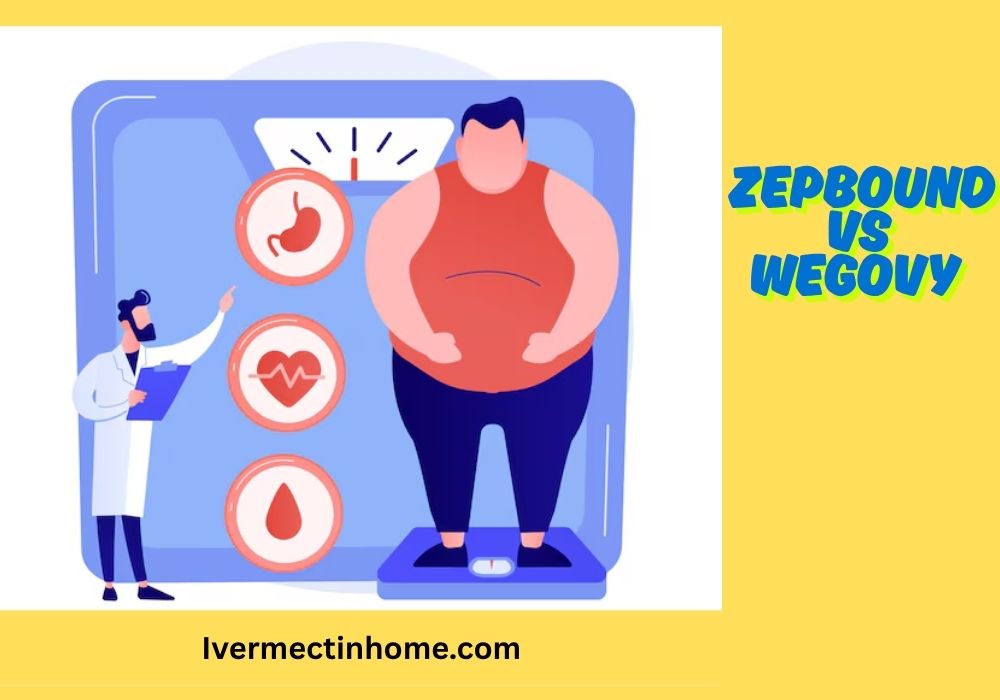Health
What is Bali Belly? How to Avoid It?

During a vacation, of course no one wants to be bothered by the emergence of stomach ache or Bali belly. Have you ever heard of the term? Although it does not exist in the medical world, the term Bali belly is said to be one of the terms that is quite common among tourists, especially travelers from abroad who visit Bali for a vacation.
So what exactly is meant by Bali belly ? Is there a way to avoid it? Well, to answer that question, continue reading the explanation about Bali belly below.
What is Bali belly?
Bali belly is a digestive disease that is commonly experienced by tourists when traveling or vacationing on the island of Bali.
This condition can also be called travelers’ diarrhea. It usually occurs when consuming food or drinks that have been contaminated by bacteria.
The risk of this disease increases when you eat or drink in places where hygiene is poor, for example on the side of the road.
However, this condition is generally harmless and can go away on its own within a few days.
How common is this condition?
Bali belly is a common medical condition that occurs when someone is on holiday to the island of Bali for the first time.
Quoting NIH , at least around 40% – 60% of people experience diarrhea while traveling. This condition generally occurs in areas with low sanitation.
Signs and symptoms of Bali belly
Its symptoms usually appear suddenly within 6 – 24 hours after being infected by bacteria in food or drink.
However, in some cases, symptoms may appear a week or more after infection. This is what causes someone to experience digestive problems after returning from Bali.
Some common signs and symptoms experienced by travelers include:
- abdominal pain or cramps,
- bloated ,
- frequent bowel movements,
- feces that turn liquid,
- nausea, and
- fever.
These digestive disorders symptoms are usually mild and can improve on their own within a few days.
When to see a doctor?
Contact a doctor immediately if your symptoms do not go away within a few days and actually get worse.
You also need to be careful if diarrhea is accompanied by other symptoms such as high fever, bloody stools, and signs of dehydration, such as dry mouth, muscle cramps, or dizziness.
Why can someone get Bali belly?
Bali belly condition is usually caused by a virus, which is found in contaminated food and water. Based on the identification results, the viruses that most often cause this are Rotavirus and Norovirus. In addition to viruses, Bali belly is also usually caused by bacterial infections that contaminate food. The bacteria commonly found in this case are E. coli, Salmonella, and Campylobacter.
The virus or bacteria enters the body through food contamination. Well, considering the activity of trying local food is something that cannot be missed when traveling, it is not impossible for someone to be attacked by Bali belly. This risk factor is quite high considering the tropical and humid climate of Indonesia, which makes the development of bacteria in food faster.
Not only that, if the storage, processing, and serving of food is done without paying attention to good and proper hygiene standards, then the risk of spreading bacteria will be greater. For that, as a tourist, it is a good idea to pay attention to the tips below.
How to avoid Bali belly
For those of you who want to visit the Island of the Gods Bali, you should understand how to avoid Bali belly. Here are some steps you can take to avoid Bali belly .
Pay attention to drinking water
The first thing you need to do to avoid Bali belly is to pay attention to drinking water. While you are in Bali, it is better to consume bottled water or bottled drinking water. In addition, if you order a drink, it should be without ice to avoid the risk of ice cubes made from unsterile water.
Maintain cleanliness
The next thing you need to do to avoid Bali belly is to maintain cleanliness. While you are in Bali, you should wash your hands regularly using soap in running water or you can also use antiseptic liquid. Washing your hands is mandatory, especially before eating. In addition, if you want to wash fruits or vegetables, avoid using tap water.
Pay attention to food
You also need to pay attention to the food you consume while on vacation in the Island of the Gods. During your vacation, you should choose fresh or freshly cooked food and try to avoid fast food. In addition, avoid consuming undercooked meat.
Use clean tools
In addition to paying attention to the food consumed, you also need to pay attention to the tools used for eating. When you are about to eat, make sure the cutlery is clean and dry. If the cutlery is wet and not clean, it is best to avoid using it.
Preparing medicines
The last way to avoid Bali belly is to prepare medicines. Especially for those of you who have a history of digestive problems, you should consult a doctor. You can prepare medicines or supplements to prevent the virus from entering the body.
Thus the explanation about Bali belly and tips that you can pay attention to prevent it. Culinary tourism is indeed not to be missed. However, you can increase your vigilance and caution in choosing a place to eat or the food consumed.
Read Also:
Health
Zepbound vs Wegovy: Which Weight Loss Drug Is Right for You in 2025?

Choosing between Zepbound and Wegovy can feel overwhelming when you’re looking for effective weight loss treatment. Both medications have revolutionized obesity care, but they work differently and offer distinct advantages. Recent head-to-head studies provide clear data on which drug might work better for you.
This comprehensive comparison covers everything you need to know about Zepbound vs Wegovy in 2025. We’ll explore their effectiveness, costs, side effects, and help you understand which option aligns with your weight loss goals.
What Are Zepbound and Wegovy?
Understanding Zepbound
Zepbound contains tirzepatide as its active ingredient, making it a dual GIP and GLP-1 receptor agonist. This means it mimics two different hormones in your body that control appetite and blood sugar. Eli Lilly manufactures Zepbound, which received FDA approval for weight loss in November 2023.
The dual-action mechanism sets Zepbound apart from other weight loss medications. By targeting both GIP and GLP-1 receptors, it may provide more comprehensive appetite control. This unique approach has shown promising results in clinical trials.
Zepbound is the same medication as Mounjaro, but it’s specifically approved for weight management rather than diabetes treatment. This distinction matters for insurance coverage and prescribing guidelines.
Understanding Wegovy
Wegovy contains semaglutide and works as a single GLP-1 receptor agonist. Novo Nordisk developed this medication, which gained FDA approval for weight loss in June 2021. Wegovy mimics one hormone that naturally occurs after eating.
The medication slows stomach emptying and sends fullness signals to your brain. This helps reduce appetite and food cravings throughout the day. Wegovy has established itself as a highly effective weight loss treatment.
Wegovy also has FDA approval for reducing cardiovascular risks in people with heart disease and obesity. This additional benefit makes it attractive for patients with multiple health concerns.
How Do They Work for Weight Loss?
Zepbound’s Dual-Action Approach
Zepbound targets both GIP and GLP-1 receptors in your brain’s appetite control centers. The dual mechanism may provide stronger appetite suppression than single-action medications. This approach could explain why some people experience more significant weight loss with Zepbound.
The GIP component helps regulate blood sugar and may influence how your body stores fat. This additional pathway could provide metabolic benefits beyond simple appetite control. Research suggests this dual action leads to more effective weight management.
Clinical studies show that Zepbound’s unique mechanism produces consistent results across different patient populations. The medication appears particularly effective for people who haven’t responded well to other treatments.
Wegovy’s Proven GLP-1 Action
Wegovy works through the well-established GLP-1 pathway, which has extensive research backing its effectiveness. This mechanism slows digestion and increases feelings of fullness after meals. The single-target approach has proven highly successful for many patients.
The medication also affects brain regions that control food cravings and eating behaviors. This neurological impact helps reduce emotional eating and food obsessions. Many patients report feeling more in control of their eating habits.
Wegovy’s mechanism has been studied extensively in various populations, including people with diabetes and heart disease. This research provides confidence in its long-term safety and effectiveness.
Weight Loss Effectiveness: The Numbers
Recent Head-to-Head Study Results
A groundbreaking 2025 study published in the New England Journal of Medicine directly compared Zepbound and Wegovy. Participants taking Zepbound lost an average of 50.3 pounds (20.2% body weight) compared to 33.1 pounds (13.7% body weight) with Wegovy. This represents a 47% greater relative weight loss with Zepbound.
The study followed 751 participants for 72 weeks, providing robust long-term data. Nearly 32% of Zepbound users achieved at least 25% body weight loss, compared to only 16% of Wegovy users. These results suggest Zepbound may be more effective for achieving significant weight loss.
The head-to-head comparison eliminates many variables that complicated previous indirect comparisons. Both groups followed similar diet and exercise protocols, making the results more reliable for clinical decision-making.
Individual Clinical Trial Results
Zepbound’s clinical trials showed participants lost up to 21% of their body weight on the highest dose. The average weight loss was 18% for people without diabetes taking the 15mg dose. These results consistently outperformed placebo groups by significant margins.
Wegovy’s clinical trials demonstrated average weight loss of approximately 15% in adults. The STEP program studies showed that 69% of participants achieved more than 10% weight loss. While impressive, these numbers fall short of Zepbound’s performance in similar populations.
Both medications show dose-dependent effects, meaning higher doses generally produce more weight loss. However, individual responses vary significantly, and some people may respond better to one medication over another.
Cost Comparison and Affordability
Current Pricing Landscape
Zepbound costs approximately $1,059 per month at list price, while Wegovy costs about $1,349 monthly. However, both companies have introduced significant discounts for cash-paying patients in 2025. These price reductions make the medications more accessible to people without insurance coverage.
Eli Lilly offers Zepbound starter doses for $349 monthly through its direct-pay program. Higher doses cost $499 per month when purchased directly from the company. These vials require manual injection with a syringe rather than pre-filled pens.
Novo Nordisk reduced Wegovy prices by 23% for cash-paying customers, bringing the monthly cost to $499. This discount applies to all dose levels and is available immediately for uninsured patients.
Insurance Coverage Challenges
Most insurance plans don’t cover weight loss medications, creating significant financial barriers for patients. Medicare cannot cover weight loss drugs unless they’re prescribed for other conditions like heart disease. This limitation affects millions of potential users.
A 2025 report shows that 4.9 million people lost Zepbound coverage from their insurance plans. While Wegovy coverage is slowly improving, many patients still face denial or high copayments. The inconsistent coverage makes cost planning difficult.
Some employers are beginning to cover these medications due to their potential for reducing healthcare costs. However, the high upfront expenses make many insurers cautious about adding coverage.
Side Effects and Safety Profiles
Common Gastrointestinal Effects
Both medications cause similar stomach-related side effects in most patients. Nausea, vomiting, diarrhea, and constipation are the most frequent complaints. These effects usually improve as your body adjusts to the medication over several weeks.
Zepbound may cause gastrointestinal side effects slightly more frequently than Wegovy. However, the severity and duration of these effects vary significantly between individuals. Starting with lower doses and gradual increases help minimize these problems.
Eating smaller meals and avoiding high-fat foods can reduce the intensity of stomach side effects. Most patients find these effects manageable and worth tolerating for the weight loss benefits.
Serious Safety Considerations
Both medications carry warnings about potential thyroid tumors based on animal studies. While no human cases have been confirmed, patients with personal or family history of thyroid cancer should avoid these drugs. Regular monitoring may be recommended for some patients.
Pancreatitis and gallbladder disease are rare but serious potential side effects. Patients should watch for severe abdominal pain and seek immediate medical attention if it occurs. These complications require stopping the medication and alternative treatment approaches.
Both drugs can cause gastroparesis (stomach paralysis) in rare cases. This condition affects stomach emptying and can be serious if not recognized early. Patients should report persistent nausea, vomiting, or stomach pain to their healthcare providers.
Who Should Choose Which Medication?
Ideal Candidates for Zepbound
People seeking maximum weight loss may prefer Zepbound based on recent comparative studies. The dual-action mechanism appears particularly beneficial for individuals who haven’t responded well to other treatments. Patients with diabetes may also benefit from the enhanced blood sugar control.
Zepbound might be better for people who can tolerate slightly more gastrointestinal side effects. The medication may also appeal to those who prefer the newer dual-receptor technology. Cost-conscious patients may appreciate the lower list price compared to Wegovy.
Individuals without cardiovascular disease who focus primarily on weight loss might find Zepbound more suitable. The medication’s robust weight loss data makes it attractive for people with significant amounts of weight to lose.
Ideal Candidates for Wegovy
Wegovy may be preferable for people with cardiovascular disease due to its FDA approval for heart risk reduction. The medication has longer-term safety data, which some patients and doctors prefer. People who are sensitive to gastrointestinal side effects might tolerate Wegovy better.
Patients who have used semaglutide successfully for diabetes may transition well to Wegovy. The familiar mechanism and established safety profile provide confidence for both patients and providers. Wegovy also has approval for use in adolescents aged 12 and older.
People seeking a medication with extensive real-world experience might choose Wegovy. The drug has been available longer and has more published research on long-term outcomes.
Making Your Decision
Consulting Healthcare Providers
Your doctor should evaluate your complete medical history before recommending either medication. Factors like diabetes status, cardiovascular health, and previous weight loss attempts all influence the decision. A thorough discussion about goals and expectations helps guide the choice.
Consider working with healthcare providers who specialize in obesity medicine. These specialists have extensive experience with both medications and can provide personalized guidance. They can also help navigate insurance coverage and cost issues.
Regular follow-up appointments are essential regardless of which medication you choose. Your provider needs to monitor your progress, adjust doses, and watch for potential side effects.
Lifestyle Factors to Consider
Both medications work best when combined with diet and exercise changes. Consider your readiness to make sustainable lifestyle modifications before starting either drug. The medications are tools that support but don’t replace healthy eating and physical activity.
Think about your injection preferences when choosing between medications. Zepbound’s vial option requires more preparation but costs less. Wegovy’s pre-filled pens offer convenience but at a higher price point.
Consider your long-term commitment to treatment, as both medications typically require ongoing use to maintain weight loss. Stopping either medication often leads to weight regain, making sustained treatment important for success.
Frequently Asked Questions
Which medication causes more weight loss, Zepbound or Wegovy? Recent head-to-head studies show Zepbound produces more weight loss, with users losing an average of 50 pounds compared to 33 pounds with Wegovy. However, individual results vary significantly.
Can I switch from Wegovy to Zepbound or vice versa? Yes, but switching should always be done under medical supervision. Your doctor will guide the transition process and adjust dosing appropriately to minimize side effects.
Which medication is more affordable? Zepbound has a lower list price and offers more aggressive cash-pay discounts. However, insurance coverage varies, and your actual cost depends on your specific plan.
Are the side effects the same for both medications? Both cause similar gastrointestinal side effects, but Zepbound may cause them slightly more frequently. Most side effects improve over time as your body adjusts.
Which medication is better for people with diabetes? Both can help with blood sugar control, but Zepbound’s dual mechanism may provide additional benefits for diabetes management. Consult your endocrinologist for personalized advice.
How long do I need to take these medications? Both medications typically require long-term use to maintain weight loss. Stopping either drug often leads to weight regain, so plan for ongoing treatment.
Do these medications work without diet and exercise? While both medications suppress appetite, they work best when combined with lifestyle changes. Diet and exercise enhance weight loss and improve overall health outcomes.
Read Also:
Health
Bioma Probiotics 2025: The Supplement Taking Over Gut Health Routines”

It started like any other day—tired, bloated, and foggy-headed. Jenna, a 34-year-old marketing executive, had battled digestive issues for years. Even with a healthy diet and regular exercise, something always felt off.
That was until she stumbled upon a growing buzz online: Bioma Probiotics. After a few weeks of use, Jenna began noticing real changes—her digestion improved, her energy levels increased, and even her mood lifted.
She wasn’t alone.
Across the globe, thousands of people are making the switch to Bioma Probiotics in 2025. But what is it about this supplement that’s drawing such a loyal following? Is it simply the latest wellness fad, or is there real science backing the buzz?
In this article, we’ll explore why Bioma Probiotics are gaining so much traction in 2025, what sets them apart, and how they may be transforming gut health for good.
What Are Bioma Probiotics?
Bioma Probiotics is a specialized supplement designed to support gut health by promoting a healthy microbiome balance. It combines carefully selected strains of good bacteria with prebiotics and nutrients that help those bacteria thrive in your digestive tract.
Key Features of Bioma Probiotics
-
Triple-action formula: Includes prebiotics, probiotics, and postbiotics for complete gut support.
-
Custom-formulated strains: Designed to balance gut bacteria for improved digestion, mood, and energy.
-
Clinically studied ingredients: Backed by research and third-party tested for purity and potency.
-
Delayed-release capsules: Shield probiotics from stomach acid so they can reach the intestines safely and effectively.
Why Are People Switching to Bioma Probiotics in 2025?
The shift toward Bioma Probiotics isn’t accidental—it reflects changing priorities in health, science, and lifestyle.
1. Increased Focus on Gut Health
In 2025, gut health is no longer just a niche wellness topic—it’s mainstream. Scientific studies continue to confirm that the gut plays a key role in:
-
Digestion and nutrient absorption
-
Immune system regulation
-
Mental health (via the gut-brain axis)
-
Weight management and metabolism
As awareness grows, so does the demand for high-quality, effective probiotic supplements—Bioma leads the charge.
2. Customized Formulation for Modern Lifestyles
Unlike generic probiotic brands, Bioma Probiotics is formulated with modern health challenges in mind. From poor diets to stress, overuse of antibiotics, and environmental toxins, Bioma’s formula is tailored to help users:
-
Reduce bloating and gas
-
Improve bowel regularity
-
Strengthen immune function
-
Enhance mental clarity and mood
3. Positive User Experiences and Testimonials
Social proof has played a major role in Bioma’s rise. Users across platforms like Reddit, TikTok, and wellness blogs report:
-
Noticeable improvements in digestion within weeks
-
Reduced sugar cravings and appetite control
-
Better energy and mental sharpness throughout the day
This kind of real-world validation gives Bioma an edge in a crowded supplement market.
What Sets Bioma Apart from Other Probiotics?
Clinically Proven Strains
Bioma doesn’t rely on filler bacteria. It uses well-researched strains like Lactobacillus plantarum and Bifidobacterium longum—proven to help with gut repair and inflammation reduction.
Prebiotics + Postbiotics
Most probiotics stop at bacteria. Bioma adds prebiotics (fuel for the good bacteria) and postbiotics (beneficial compounds produced by probiotics) for a complete gut ecosystem solution.
Adaptogenic Support
Some Bioma formulas include adaptogens like ashwagandha and rhodiola—herbs that support stress resilience, making it more than just a digestive supplement.
Bioma Probiotics: Who Can Benefit?
Bioma is suitable for anyone, but especially helpful for:
-
People with digestive issues (bloating, constipation, IBS)
-
Those recovering from antibiotic use
-
Individuals with skin concerns (eczema, acne)
-
People seeking natural mood support
-
Health-conscious individuals and fitness lovers aiming to boost their metabolism.
FAQs
Q1: How long does it take for Bioma Probiotics to work?
Many users notice positive changes—like better digestion and increased energy—within just 2 to 4 weeks.
Q2: Are there any side effects?
Some users experience mild gas or bloating in the first few days as their gut microbiome adjusts, but this typically subsides quickly.
Q3: Can I take Bioma Probiotics with other supplements?
Yes, Bioma is generally safe to take alongside other vitamins or medications, but it’s always best to consult with a healthcare provider.
Q4: Is Bioma suitable for vegans?
Yes, Bioma uses plant-based capsules and contains no animal products.
Conclusion
In 2025, the demand for smarter, science-backed wellness solutions is higher than ever—and Bioma Probiotics has emerged as a trusted leader in the gut health space. By combining powerful strains, innovative formulation, and real-world results, it offers more than temporary relief—it helps restore long-term balance from the inside out.
Whether you’re struggling with digestion, fatigue, or just want to improve your overall well-being, it’s no surprise why more people are making the switch to Bioma Probiotics this year.
READ ALSO:
10 Empowering Ways for Setting Healthy Boundaries in Recovery
Health
10 Empowering Ways for Setting Healthy Boundaries in Recovery

Recovery isn’t just about quitting a substance or behavior — it’s about reclaiming control over your life. Learning to set healthy boundaries is a crucial part of the recovery journey. These boundaries aren’t barriers that shut others out—they’re pathways to stronger relationships, emotional well-being, and a more balanced inner life. In recovery, boundaries can help prevent relapse, rebuild self-esteem, and restore dignity after a period of chaos or codependency.
What Does It Really Mean to Set Boundaries in Recovery?
Establishing boundaries in recovery involves identifying and communicating what you will and won’t allow in your life. It involves recognizing your limits, communicating them clearly, and taking action when they are crossed. It’s about prioritizing your healing above people-pleasing or unhealthy attachments.
This includes everything from saying no to late-night invitations that threaten your sobriety to limiting conversations with emotionally manipulative people.
The Role of Boundaries in Emotional Sobriety
While physical sobriety is often the initial goal, emotional sobriety is where deep transformation happens. Emotional sobriety requires:
-
Clarity in communication
-
Ability to self-regulate without external validation
-
The confidence to walk away from toxicity
Boundaries act as anchors in this process, keeping you grounded when emotional triggers arise.
Types of Boundaries in Recovery
Understanding the different types of boundaries can help you identify where change is needed:
Physical Boundaries
Protecting your personal space and body.
Emotional Boundaries
Not absorbing others’ feelings or guilt-tripping behavior.
Mental Boundaries
Maintaining your own opinions and beliefs without being influenced by manipulation.
Time Boundaries
Managing your schedule and commitments without burnout or over-obligation.
Recognizing Unhealthy Patterns
Sometimes, unhealthy boundaries are deeply ingrained:
-
Always saying “yes” to avoid conflict
-
Feeling responsible for others’ emotions
-
Allowing others to take advantage of you just to avoid feeling lonely.
Recovery is your chance to rewire those behaviors and adopt healthier, self-respecting habits.
Why Boundary Setting Can Feel Hard in Recovery
Many in recovery struggle with guilt, shame, and fear of rejection. These emotions make it harder to set and enforce limits. Some grew up in environments where boundaries weren’t modeled or respected. Understanding this context is essential in developing patience and compassion for yourself while you learn.
Boundaries as a Relapse Prevention Tool
Without boundaries, you may unknowingly expose yourself to people or environments that put your sobriety at risk. For example:
-
Spending time with people who still use
-
Saying yes to events that include alcohol
-
Overworking to the point of exhaustion
Healthy boundaries create a buffer zone that protects your recovery journey.
Examples of Healthy Boundaries in Recovery
-
“I’m not comfortable discussing my past with someone I don’t trust.”
-
“I have to remove myself from environments where substances are being used.”
-
“My phone will be off after 10 PM so I can prioritize sleep.”
These statements reflect power, clarity, and self-awareness.
How to Communicate Boundaries Without Guilt
Use “I” statements:
-
“I feel overwhelmed when I’m asked to do too much.”
-
“I need time alone to recharge.”
Avoid:
-
Overexplaining
-
Apologizing for taking care of yourself
-
Being aggressive or passive-aggressive
Family and Friends: Loving Without Losing Yourself
It’s common to rebuild relationships in recovery. But without boundaries, you may fall into old codependent patterns. Be honest about your limits, even with loved ones. You’re not responsible for managing others’ reactions — only your actions.
Letting Go of Toxic Connections
Not everyone belongs in your recovery chapter. Boundaries may mean limiting or ending contact with people who:
-
Don’t respect your sobriety
-
Guilt you for changing
-
Trigger trauma or negative coping patterns
It’s painful, but it’s often necessary.
Setting Boundaries in Peer Support and 12-Step Groups
Even in recovery spaces, boundaries are vital. Whether it’s:
-
Not giving advice when not asked
-
Avoiding trauma-dumping in early friendship
-
Respecting confidentiality
Boundaries promote safety and mutual respect.
Therapy: Your Ally in Boundary Work
Therapists can help:
-
Identify your personal values
-
Role-play difficult conversations
-
Heal trauma that impairs boundary-setting
Consider therapy a sacred space to practice saying “no” and meaning it.
Journaling to Define Your Limits
Try prompts like:
-
“Where do I feel drained in my life?”
-
“What should I invite more of into my life — and what should I limit or let go of?”
-
“When did I last feel disrespected?”
These entries guide your boundary blueprint.
Workplace Boundaries in Recovery
You don’t owe anyone your story at work. Set limits on:
-
Hours worked
-
Gossip engagement
-
Being “always available”
A healthier work life supports a healthier recovery.
Digital Boundaries: Mindfully Using Social Media
Avoid content that:
-
Glorifies substance use
-
Triggers comparison or shame
-
Distracts you from healing
Follow accounts that uplift and support sobriety.
What to Do When People Push Back
Not everyone will applaud your growth. If someone challenges your boundary:
-
Stay calm
-
Reaffirm your need
-
Walk away if needed
Your peace is worth protecting.
The Link Between Boundaries and Self-Worth
Setting boundaries is an act of self-love. It communicates:
-
“I matter.”
-
“My needs are valid.”
-
“I deserve respect.”
As your confidence grows, so does your ability to protect your recovery.
FAQs About Setting Healthy Boundaries in Recovery
Why are boundaries important in recovery?
They protect your mental and emotional well-being, helping prevent relapse and rebuild trust.
Is it selfish to set boundaries?
No. Boundaries are about mutual respect, not selfishness.
How do I start setting boundaries when it feels awkward?
Start small, practice with safe people, and use clear “I” statements.
How should I respond if someone reacts angrily to my boundary?
Their reaction is not your responsibility. Stay firm and respectful.
Can boundaries change over time?
Absolutely. As your healing deepens, your boundaries can evolve too.
Conclusion: Healthy Boundaries = Lasting Recovery
Setting healthy boundaries in recovery is not just a skill — it’s a form of self-protection and personal growth. Boundaries teach the world how to treat you and remind you of your worth. With time and practice, boundaries become instinctive, transforming confusion into clarity and vulnerability into resilience.
READ ALSO:
-

 More7 months ago
More7 months agoThe Rise of Lillienu: Transforming Technology and Creativity
-

 Fashion7 months ago
Fashion7 months agoUnveiling the Secrets of Ceylan Eye Cream Reviews
-

 More7 months ago
More7 months agoSwindle Trilogy Website: A Must-Visit Hub for Book Lovers
-

 More7 months ago
More7 months agoInfluencersginewuld: Revolutionizing the Influencer Marketing Landscape
-

 More7 months ago
More7 months agoThe Rise of Artofzio: Transforming Creativity in the Digital Era
-

 More7 months ago
More7 months agoCeylan Eye Cream Reviews: Is It Worth the Hype?
-

 News6 months ago
News6 months agoThe Shocking Details of the Scott Levin 2011 Truck Accident
-

 Business7 months ago
Business7 months agoIvermectin: The Medication That Changed Global Health
